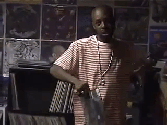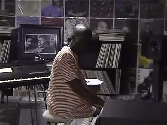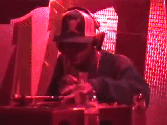-
About
- About Listly
- Community & Support
- Howto
- Chrome Extension
- Bookmarklet
- WordPress Plugin
- Listly Premium
- Privacy
- Terms
- DMCA Copyright
- © 2010-2024 Boomy Labs


 Frontrunner Magazine
Frontrunner Magazine
Listly by Frontrunner Magazine
J Dilla is often referred to as "your favorite producer's favorite producer." That's because, although his name is not as famous as other producers of his time, Jay Dee is the near-unanimous choice in conversations about the greatest to ever create hip hop music. Some people love him for the signature boom and bounce underneath all of his drum beats, while others revel in the stories he was able to evoke through his sample choices and the subtle messages in his music.
Before his life was tragically cut short at the age of 32, James "J Dilla" Yancey earned production credits for a wide range of incredible artists like Janet Jackson, Busta Rhymes, Common, Erykah Badu, The Roots, A Tribe Called Quest, De La Soul, and many more. He left behind a legacy of more than just amazing beats: Dilla demonstrated that when you pour your heart and soul into your work, you have a chance to leave an impression on a culture and community for generations to come.
Here are a few tips to help you do your best impression of J Dilla when you step into the studio.

At the heart of every J Dilla beat is at least one core sample. It could be a jazzy piano riff, a gritty synth lead, a cinematic orchestral swell, or a full section from a rock and roll song. Dilla's ear was his best asset when it came to production, and he was diligent about selecting samples that spoke to his taste and his vision for what music could be. As you sift through samples and decide which pieces to incorporate into your own records, trust your ears and don't be afraid to go in your own new direction.

J Dilla's signature sound is not characterized by a particular instrument or chord pattern: it's a sense of timing. Before Dilla, most hip hop beats came from cleanly chopped drum breaks or from beat machines synchronized to a grid. Dilla was among the first producers to inject a purely human feel into his music, ignoring the grid and letting his kicks, snares, and bass lines slide in and out of time with each other to create a natural, hypnotic groove. Practice playing your beats without quantization and listening for the subtle interplay between notes.

J Dilla was a true artist who worked hard to push the boundaries of music and production, but he also had a much simpler goal in mind: He wanted his beats to knock. Spend time searching in sample libraries to collect deep, round kick drums that punch through the mix, and a whole lot of crisp, biting snares to drive your beats forward. If you want to emulate J Dilla, this step is non-negotiable.

One of J Dilla's go-to tricks for creating a bass line was to sample a whole section of a song — for instance, a few bars from the verse of a funk track — then carve out the middle and high frequencies with a filter so that only the bass was left. When you can't find perfectly isolated samples within a song, try using high- and low-pass filters to see what you can sculpt out of the full mix.

J Dilla's music was not known for complex arrangements or wild dynamic fluctuations. In many cases, Dilla worked on constructing pristine four-bar loop, then just let it ride for a few minutes. This approach works well when you need to create a foundation for a rap song, but it's also an interesting way to craft instrumental music. Sometimes the best advice is to keep things simple.

In the end, the real gift that Dilla gave to hip hop — and to music in general — was his personality, which shined through every track he touched and continues to captivate listeners today. Dilla never got hung up on doing things the "right" way. He never read the user manual for his MPC, and now that same machine is on display at the National Museum of African American History and Culture. The real lesson we can learn from Dilla is that a producer's most valuable skill is the courage to be yourself, trust your instincts, and speak honestly through your music.
